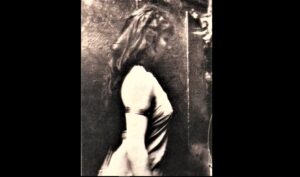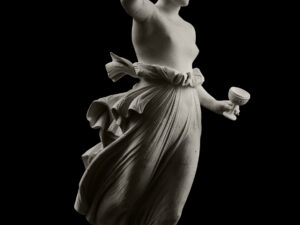
Leggendo gli otto scritti di Auguste Rodin (1840-1917), composti fra il 1904 e il 1917 e raccolti nel volumetto Lezione dell’antico (Abscondita, 104 pagine, 12 euro), si percepisce l’incondizionata ammirazione che lo scultore francese nutriva per l’arte del passato, considerata insostituibile fonte di ispirazione e conferma e incitamento nel proseguo della sua incessante ricerca creativa, tutta comunque connotata in senso fortemente autonomo e personale.
“L’Antico è la Vita stessa – scriveva il maestro nel testo che apre la raccolta, pubblicato la prima volta nel 1904 sulla rivista Le Musée -. Non v’è nulla di più vivo dell’Antico, e nessuno stile al mondo ha saputo né potuto raffigurare la Vita nello stesso modo. L’Antico ha saputo raffigurare la Vita, per che gli antichi sono stati i più grandi, i più seri, i più mirabili osservatori della Natura che siano mai esistiti”.
Qualche mese più tardi, nel commentare sulle pagine della stessa rivista un’Afrodite del IV secolo avanti Cristo, annotava: “L’Antico è per me la bellezza suprema, è l’iniziazione all’infinito splendore delle cose eterne: è la trasfigurazione del passato in qualcosa di eternamente vivo. I greci ci prendono per mano, ci fanno sentire la bellezza delle forme, l’elemento sacro presente in essa, ci mostrano con il loro esempio che non bisogna esser chiamati vanamente alla festa della Vita. I loro marmi sono i messaggeri divini che ci insegnano il nostro dovere”.
Nell’insieme di questi scritti, nell’affrontare l’analisi di una statua greca, uno studio sul Partenone, o su Michelangelo, o sulle cattedrali gotiche, Rodin non soltanto ha offerto saggi preziosi della propria eloquente capacità di rilettura estetica, ma ha anche reso palese l’intima affinità che lega i capolavori del passato al suo operare, e lo spirito di appassionata difesa dell’arte antica che lo induce ad esortarne la cura.
Riguardo alle cattedrali gotiche, ad esempio, egli biasima coloro che dovrebbero occuparsene e non lo fanno degnamente: “Ci mobilitiamo a favore del Partenone, che non è nostro: quel che è nostro ci è indifferente, può anche perire; è una cattiva abitudine ormai acquisita. E tuttavia – scrive – esistono opere più vicine, per sentimento, dei capolavori gotici? Chartres è l’arcaismo di Olimpia, Reims è il sole tramontante, simbolo di Apollo. Bisogna dunque, mie cattedrali, darvi i nomi dei vostri fratelli greci per difendervi? Credo che le cattedrali siano difficili da comprendere quanto il Partenone. Gli esperti che vivono di esse, vengono a vederle e le analizzano con la lente, per poi restaurarle in modo pietoso privandole della loro anima”. E ancora: “Abbiamo bisogno di bellezza: facciamo dunque in modo che la nostra indignazione serva a salvare il nostro suolo e i nostri capolavori”.
L’entusiastico resoconto di un soggiorno romano, pubblicato nel 1912, si chiude con la descrizione del gruppo marmoreo della Pietà di Palestrina del Buonarroti: “Il genio di Michelangelo appare sintetizzato in questo capolavoro più che in ogni altro. Lo si potrebbe far rotolare da una montagna senza riuscire a spezzarlo. E’ esso stesso una montagna. Tutte le linee sono nella massa. Non vi è niente che superi i piani essenziali. E’ di una severità egizia, e tutto è contenuto in un quadrato. (…) L’insieme è sublime, e non dimenticherò mai il braccio del Cristo che ricade morente e che somiglia a una zampa di leone”.

Il culmine dell’adesione di Rodin allo spirito classico è raggiunto nel suo testamento spirituale, edito per la prima volta nel 1911: un breve ma intenso lascito intellettuale che egli dedica a coloro che chiama “i giovani che aspirano ad essere i sacerdoti della bellezza”.
Ai suoi eredi ideali egli porge un appassionato compendio della propria lunga esperienza, destinando loro i suggerimenti per imboccare la via del perseguimento di un’arte capace di un’autentica elevazione spirituale dell’intera umanità. “Inchinatevi dinanzi a Fidia e a Michelangelo – esordisce -, tuttavia guardatevi dall’imitare i nostri grandi antenati. Rispettosi della tradizione, sappiate distinguere ciò che essa racchiude di eternamente fecondo: l’amore per la Natura e la sincerità. (…) E’ la tradizione stessa che vi spinge ad interrogare senza tregua la realtà, e che vi impedisce di sottomettervi ciecamente ad un qualsiasi maestro”.
E subito ribadisce il ruolo primario della Natura, da venerare come unica dea meritevole di assoluta fedeltà, poiché è in essa che l’artista può rintracciare la verità interiore celata dalla forma, quella verità che è la bellezza stessa. L’invito è a non rinunciare ad uno studio e ad un esercizio continui, ad una ricerca scultorea volta ad oltrepassare i limiti della superficie, in funzione del volume, della profondità, della definizione dello spazio.
Se è vero che l’arte va intesa come sentimento puro, Rodin insiste sulla necessità assoluta di avere perfetta padronanza della scienza dei volumi, delle proporzioni, dei colori, poiché “senza la destrezza della mano, il sentimento più vivo è come paralizzato”.
“Giovani, siate veri!”; “I maestri sono coloro che guardano con i propri occhi ciò che tutti hanno visto, e che sanno cogliere la bellezza di ciò che per gli altri spiriti è troppo comune”; e ancora: “Amate appassionatamente la vostra missione. Non ne esiste una più bella”.
L’esortazione conclusiva è ad esprimere sempre ciò che si pensa, poiché l’arte dev’essere una splendida lezione di sincerità. “Immaginate dunque quali meravigliosi progressi si realizzerebbero d’improvviso se la veracità assoluta regnasse tra gli uomini! Ah, come la società si sbarazzerebbe degli errori e delle brutture, che allora riconoscerebbe, e con quale rapidità la nostra Terra diverrebbe un Paradiso…”.
This article has been traslated by http://translate.google.it/
Reading the eight writings of Auguste Rodin (1840-1917), composed between 1904 and 1917 and collected in the volume of the ancient Lesson (Abscondita, 104 pages, 12 €), you feel the unconditional admiration he had for the French sculptor the art of the past, considered irreplaceable source of inspiration and encouragement and confirmation in the rest of his incessant creative research, however, characterized the whole had a significant independent and personal.
“The Ancient is Life itself – the teacher wrote in the text that opens the collection, first published in 1904 in the journal Le Musée -. There is nothing more alive of antiquity, and neither style nor could the world has been able to depict life in the same way. The Old has been able to portray the life, for which the ancients were the biggest, the most serious, the most admirable observers of Nature that ever lived. “
A few months later, in commenting on the pages of the same magazine Aphrodite of the fourth century BC, noted: “The Ancient is for me the supreme beauty, is the empowerment infinite splendor of eternal things: the transfiguration of past into something eternally alive. The Greeks take us by the hand, they make us feel the beauty of the forms, the sacred element present in it, show us by their example that we should not be called vainly to the Feast of Life. Their marbles are the divine messengers who teach us our duty. “
In all these writings, in dealing with the analysis of a Greek statue, a study of the Parthenon, or Michelangelo, or the Gothic cathedrals, Rodin has not only offered valuable essays of his eloquent ability to re-reading aesthetics, but also made clear the intimate affinity with the masterpieces of the past to his work, and the spirit of passionate defense of ancient art that led him to esortarne care.
With regard to the Gothic cathedrals, for example, he blames those who should deal with it and do not do it with dignity: “We mobilize in favor of the Parthenon, which is not ours: what is ours there is indifferent, it can also destroy them is a bad habit now acquired. And yet – he writes – there are works closer to feeling, of Gothic masterpieces? Chartres is the archaism of Olympia, Reims is the setting sun, the symbol of Apollo. We must therefore, my cathedrals, give you the names of your brothers Greeks to defend yourself? I believe that the cathedrals are difficult to understand what the Parthenon. The experts who live in them, they come to see them and analyze them with the lens, and then restore them in so pitiful depriving them of their souls. ” And again: “We need beauty: therefore we do so that our indignation serve to save our land and our masterpieces.”
The enthusiastic account of a stay in Rome, published in 1912, ends with the description of the marble group of the Palestrina Pietà of Michelangelo: “The genius of Michelangelo is summarized in this masterpiece more than in any other. It could be rolled from a mountain without being able to break it. E ‘is itself a mountain. All the lines are in the mass. There is nothing that exceed the essential planes. It ‘an Egyptian severity, and everything is contained in a square. (…) The whole is sublime, and I will never forget the arm of Christ, who lies dying and that looks like a lion’s paw. “
The culmination of the accession to the spirit of Rodin’s classic is reached in his spiritual testament, published for the first time in 1911: a brief but intense intellectual legacy that he dedicates himself to those he calls “the young people who aspire to be the priests of beauty” .
His heirs ideals he hands her a passionate compendium of his long experience, allocating their suggestions to take the path of the pursuit of an art capable of an authentic spiritual upliftment of all humanity. “Bow down to Phidias and Michelangelo – his debut – but beware of imitating our great ancestors. Respectful of tradition, know how to distinguish what it contains of eternally fruitful: the love for nature and sincerity. (…) And ‘the tradition itself is pushing relentlessly to question reality, and that prevents you from blindly obey any master. “
And immediately reaffirms the primary role of Nature, to be worshiped as the only goddess worthy of absolute loyalty, as it is in it that the artist can trace the inner truth concealed by the form, the truth that is beauty itself. The invitation is to not give up a study and a continuous exercise, a sculptural research aims to go beyond the limits of the surface, depending on the volume, depth, definition of space.
If it is true that art should be understood as pure feeling, Rodin insists on the absolute need to have perfect mastery of the science of volumes, proportions, colors, since “without the dexterity of the hand, the more I like the feeling paralyzed.”
“Young people, be real!”; “The teachers are those who see with their own eyes what everyone has seen, and know how to capture the beauty of what the other spirits is too common,” and again: “Do you love passionately your mission. There is not a more beautiful “.
The final exhortation is to always express what you think, because art should be a great lesson in sincerity. “Imagine, therefore, what wonderful progress would obtain if all of a sudden the veracity absolute reign among men! Ah, how the company sbarazzerebbe errors and ugliness, then recognize that, and how quickly our earth would become a paradise … “.



